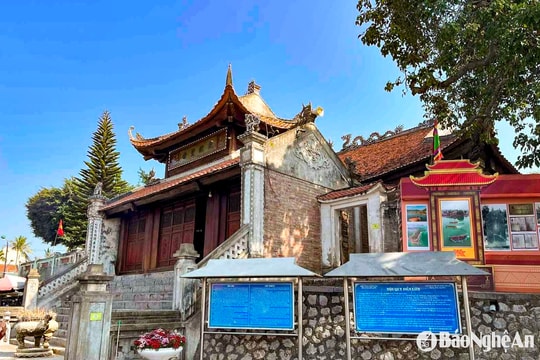Tran Manh Cuong: "Young calligrapher" of Nghe An
Choosing his own path full of courage, 8X cultural researcher Tran Manh Cuong has persistently studied Han Nom script to approach ancient documents, from which he concretized them with research works with scientifically decoded arguments and proofs. With his love and responsibility in protecting the ancient vestiges remaining in Nghe An, Mr. Tran Manh Cuong has been affectionately called by many people as "Young scholar of Nghe An."
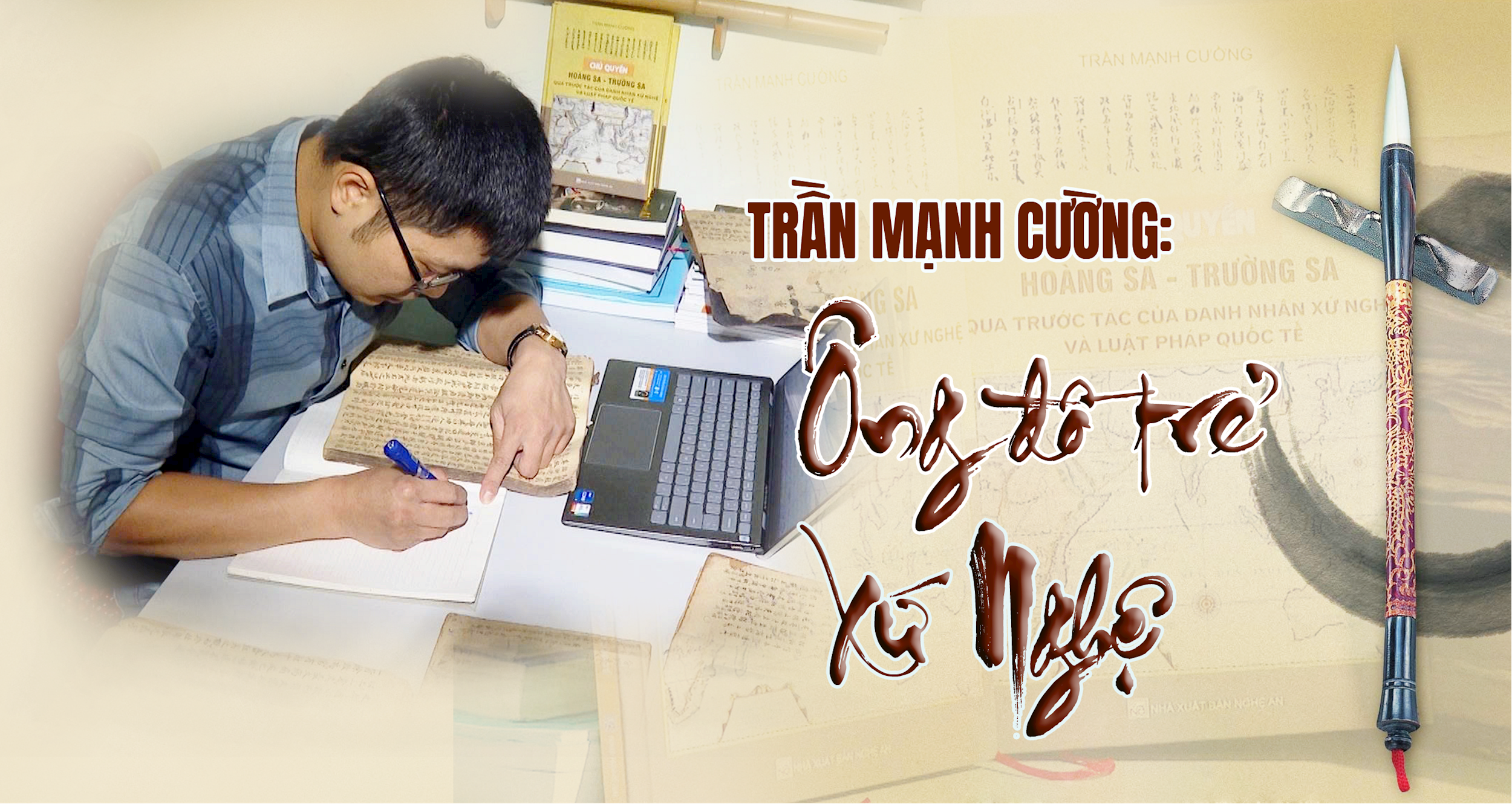
Le Trang(Perform)-Technique:Hong Toai• November 9, 2025
-----------------------o0o-----------------------
Choosing his own bold path, 8X cultural researcher Tran Manh Cuong has persistently studied Han Nom characters to approach the
ancient documents, from which to concretize with research works with
The arguments and evidence are decoded scientifically. With his love and responsibility in protecting the ancient vestiges remaining on Nghe An land, Mr. Tran Manh Cuong has been affectionately called by many people as
"Young scholar from Nghe An".


PV:With 15 years of researching historical documents from Han - Nom characters, what do you like most?
Researcher Tran Manh Cuong:We know that the Vietnamese people have been writing Chinese characters for nearly 1,000 years. Therefore, most of the books in fields such as politics, military, economics, culture, history, literature, etc. are written in Chinese and Nom characters. If we can read Chinese and Nom characters, we will understand the knowledge contained in that vast treasure.
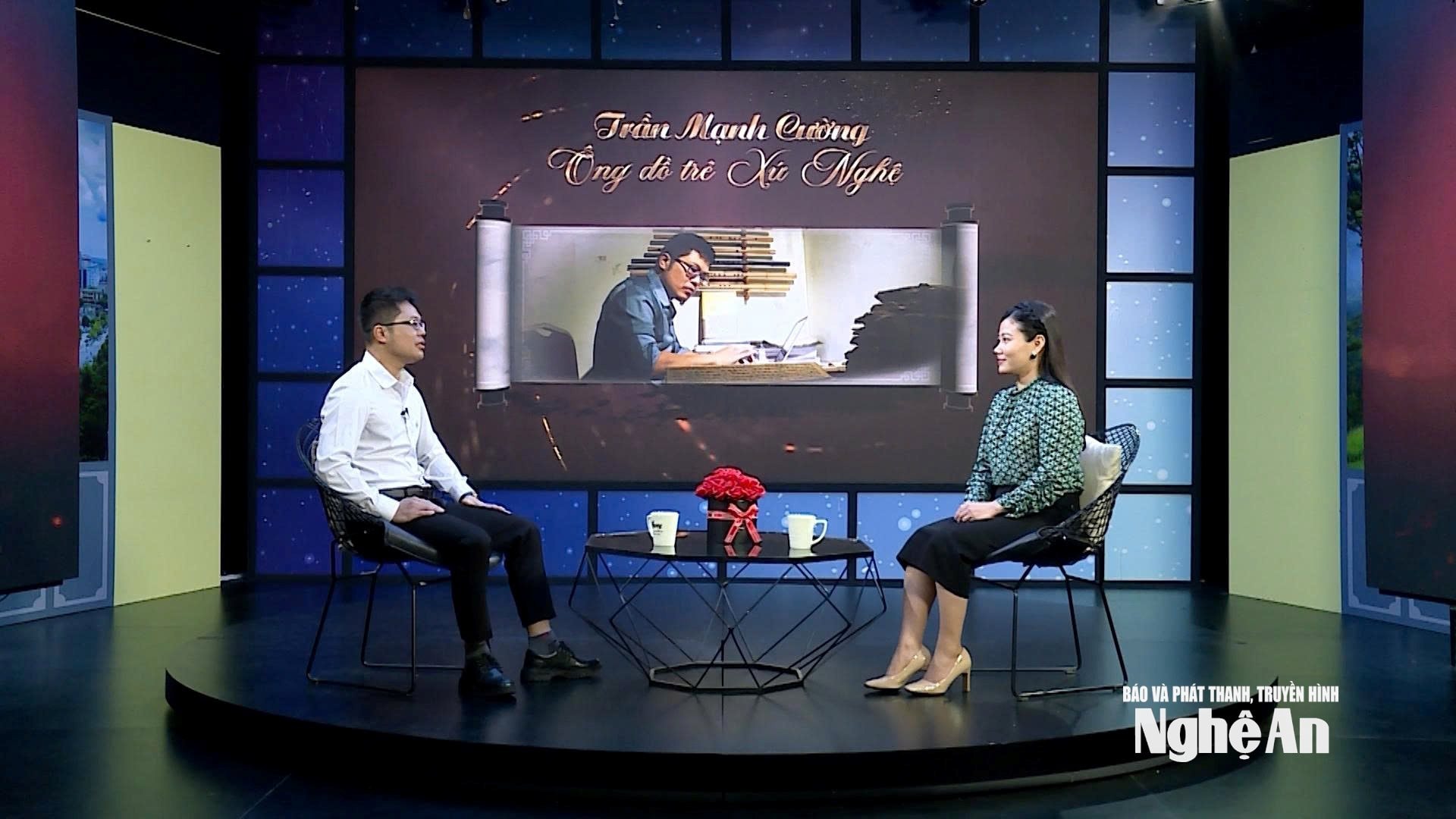
PV:And surely you still remember the first Han-Nom text that became your destiny?
Researcher Tran Manh Cuong:Yes. It was in the winter of 2010. At that time, I had just started working at Nghe An Provincial Library. One day, Mr. Dao Tam Tinh, then the Director, took me to the Tu family temple in Nam Dan. There, I had access to an ancient document, which was the royal decree of Tu Tong Thuy. While reading, I felt something very familiar. After that, when I got home, I continued to dig deeper, think and turn over previous memories.
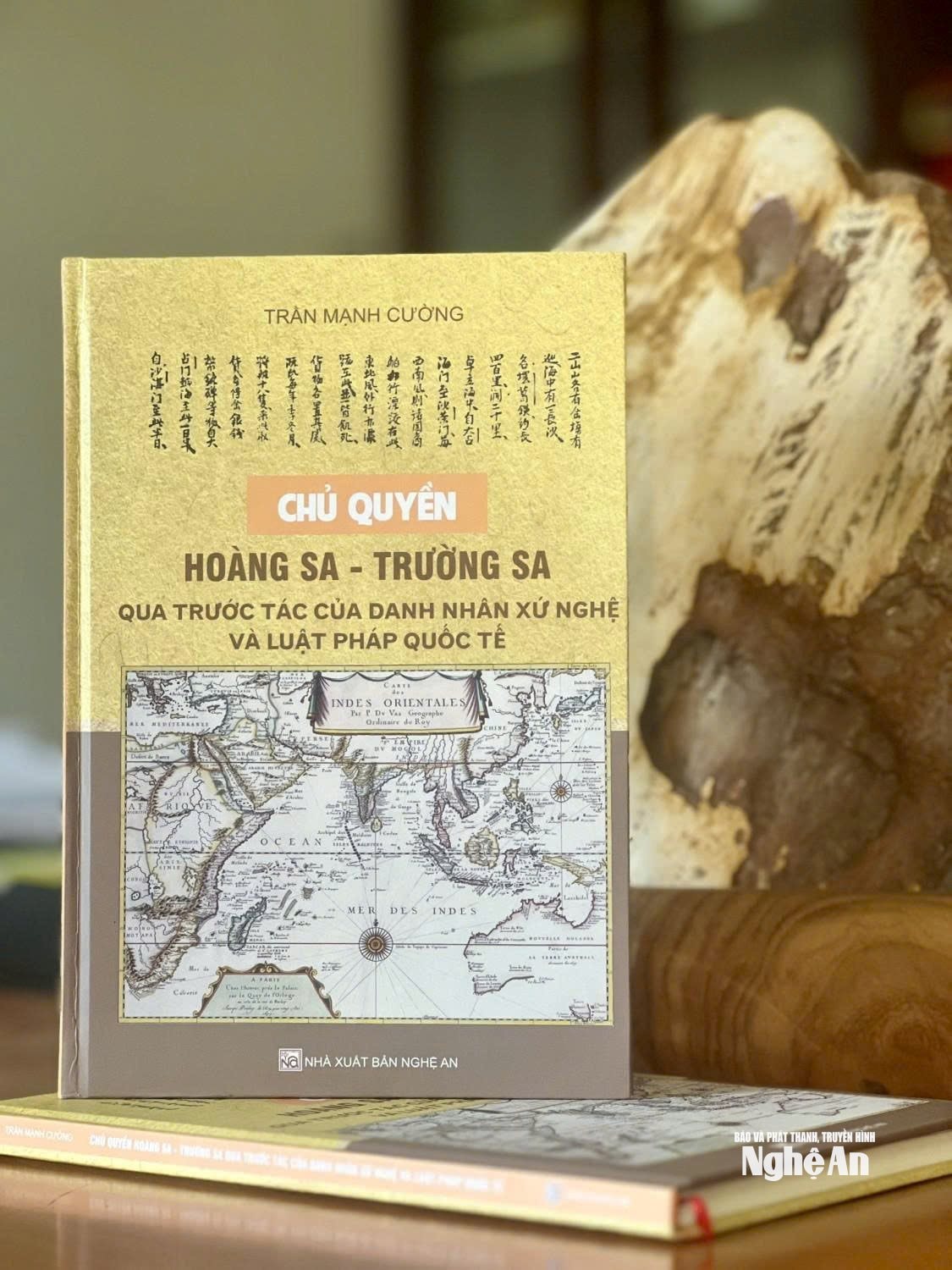
It was only much later that I realized that this document was related to a historical figure, Dr. Nguyen Huy Quynh - an outstanding son of the Nguyen Huy Truong Luu family, who was also the first person to write about the homeland of the Hoang Sa Fleet. He had a very famous work called Quang Thuan Dao Su Tap, which recorded the geography and history of Dang Trong. This part clearly recorded the homeland of the Hoang Sa Fleet in Cu Lao Re.
Not only can he read and understand ancient texts deeply, but Mr. Tran Manh Cuong also has the ability to compose - something very rare in young people pursuing Han Nom research - an extremely difficult field" -Local researcher Pham Xuan Can.
The information I collected was from very far away places, but coincided and was closely linked. That is why I came up with the idea of completing a book about the contributions of Nghe people in affirming the sovereignty of Hoang Sa - Truong Sa in the history of Vietnam.
.jpg)
PV:Choosing a journey is rare and difficult. Difficult for the researcher, and difficult for the recipient. How did you overcome those difficulties?
Researcher Tran Manh Cuong:It is also very interesting that I work with the ancients, but I am a young person. Therefore, when receiving ancient texts, I always try to translate and present them so that young people like me, or younger than me, can understand those academic texts as easily as possible.
PV:Being called "young calligrapher of Nghe An", how do you accept it?
Researcher Tran Manh Cuong:I myself do not dare to accept it, because Nghe An is a land of learning, a land of outstanding people, with many outstanding talents. When being called like that, I feel embarrassed. But through that, I also realize that I need to try harder to be worthy of the respect that everyone has for me.
.png)

PV:One of the most important activities of a local scientist is fieldwork. Over the years, which field trip has left the deepest impression on you?
Researcher Tran Manh Cuong:The trip that left the most impression on me was the journey to find documents related to Phuc Le Commercial Port in Hung Nguyen District. Once, by chance, reading an online newspaper, I saw in Japan an introduction to a diplomatic letter sent by Vietnam to Japan in 1591. When reading the Chinese characters on that letter, I had a very familiar feeling, as if I had seen it somewhere before. Then I confirmed that this was the letter written by Phuc Nghia Marquis Nguyen Canh Doan - an outstanding son of the Nguyen Canh family. The letter established diplomatic and economic relations between the two countries.
I wrote an analysis and concluded that the author of the letter was from Nghe An and the letter was sent from Nghe An. Colleagues in Japan later read the article, went to the place, and went with me to places related to that character and event to continue searching for historical documents, contributing to clarifying the issue.
PV:From your field trips, what do you notice is the most unique cultural characteristic that only Nghe An has?
Researcher Tran Manh Cuong:Nghe An people are pioneers in almost every field. For example, throughout history, our country, regardless of the era, has always affirmed that the two archipelagos of Hoang Sa and Truong Sa are sacred parts of the Fatherland. Particularly, the first work affirming that Hoang Sa and Truong Sa are managed by the Vietnamese government is by a Nghe An person - Confucian scholar Do Ba Cong Dao, from Thanh Chuong. The work Complete Works of Thien Nam Tu Chi Lo Do Thu, written before 1686, was to help the Trinh Lord's government in Dang Ngoai better understand Dang Trong.
PV:The young scholar from Nghe An not only has new discoveries of scientific value but is also a collector and preserver of extremely rare ancient books in Nghe An province and the whole country, with over 50 priceless ancient books. How did you get involved with ancient books?
Researcher Tran Manh Cuong:During my fieldwork in the villages of Nghe An, I always had the opportunity to come into contact with many rare and precious ancient books of families and clans. I have a principle of never buying from the people, but only from those who are also collecting and trading ancient books, no matter how high the price.
.jpg)
Photo: Le Trang

PV:What do "dialogues" with old books bring you?
Researcher Tran Manh Cuong:In 2012, I bought from a collector in Nam Dinh province (old) the book “Nghe An Poetry Collection” – a work about every aspect of Nghe An province: from characters, places, landscapes to customs and habits, all written in poetry by the famous scholar Bui Huy Bich. Rereading the words written by my ancestors about my homeland, I felt an indescribable satisfaction. I meticulously retyped each word, translated, and then systematized the content to summarize the values that the book conveys.
Researcher Tran Manh Cuong is working on the project "Nghe An Stele", which is a massive source of documents that not only serves historical and cultural research, but can also be exploited to develop the heritage economy in the province."- Dr. Nguyen Minh Tu - Director of the Center for Social Sciences and Humanities of Nghe An province said.
.png)

PV:You once shared that you wanted to become an Nghe An scholar, so up to this point, are you confident enough to have it?
Researcher Tran Manh Cuong:I really don’t dare to accept it, but I will try my best. After 15 years of fieldwork and collecting, I am confident in the system of documents I have. I have records and related documents in almost every village in Nghe An and Ha Tinh, especially those written in Han Nom about history and culture. I will continue to exploit and disseminate them, so that everyone can access the valuable knowledge left by our ancestors.

PV:Does our scholar intend to find his descendants?
Researcher Tran Manh Cuong:After many of my predecessors passed away or retired, I became a solo traveler. But perhaps by fate, as guided by my predecessors, I found a junior to continue this work, that is Tran The Trung - Champion of Road to Olympia in 2019. Trung is currently studying Chinese with me. I have imparted all my knowledge in many fields, and now we are writing many books together. In the near future, the published works will also be the result of the work of both brothers.
The biggest thing I learned from Mr. Tran Manh Cuong is the spirit of never giving up. I know he encountered many difficulties in the process of learning and researching, but he always maintained optimism and perseverance.- Road to Olympia 2019 Champion Tran The Trung shared.
PV:Can you share about your upcoming research projects?
Researcher Tran Manh Cuong:I will launch the work "Stele of Nghe An". This is a collection of steles of Nghe An consisting of many parts: The first part is about Buddhist steles, the second volume is about steles of scholars, followed by steles related to religious life and folk activities in Nghe An.
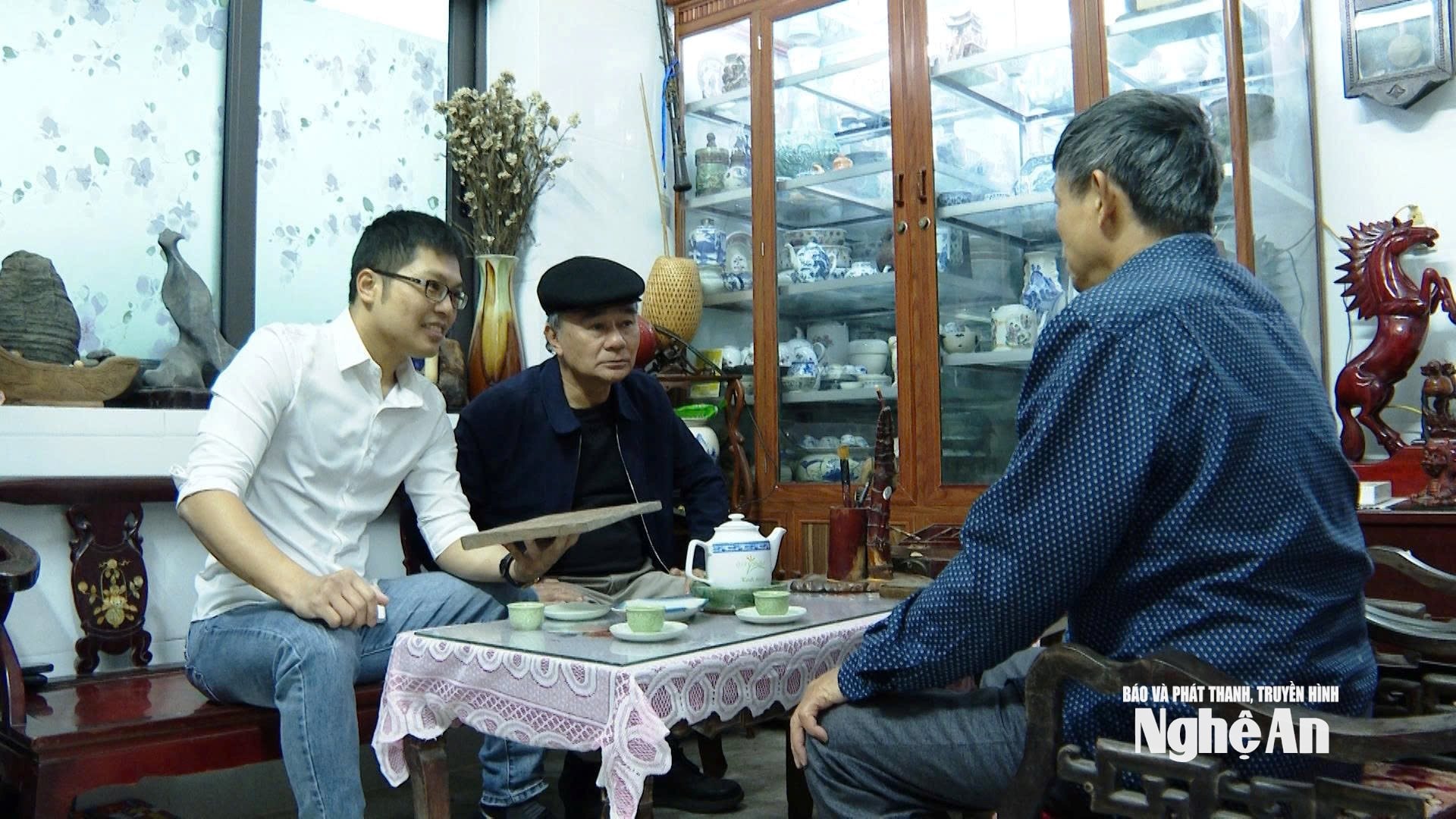
In particular, I will publish the work Nam Thien Bien Luc, a collection of critical articles on historical and cultural issues of Nghe An, some of which have been posted on my personal Facebook, in newspapers and magazines from the past to the present, helping readers have a more objective view, re-perceiving some historical issues that were previously understood differently. I will provide original documents, so that we can see that there are many things that we have always thought so, but in fact, it is not so.
PV:Thank you cultural researcher Tran Manh Cuong and wish you always burning with passion, persistent research, and we will wait for your new works.
Researcher Tran Manh Cuong is the author of the books: Royal Decree of Nghe An (Nghe An Publishing House, 2014), Hoang Sa - Truong Sa Sovereignty through the works of famous people of Nghe An and International Law (Nghe An Publishing House 2023); Quy Vien Medical Encyclopedia (Nghe An Publishing House, 2024).


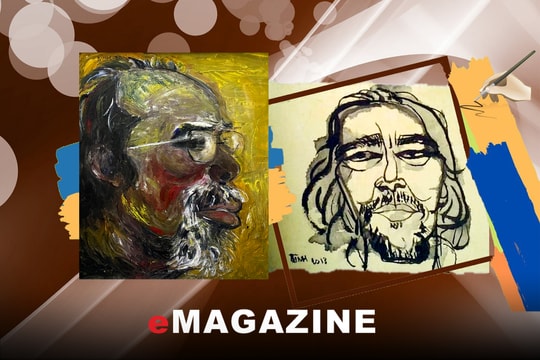
.jpg)
